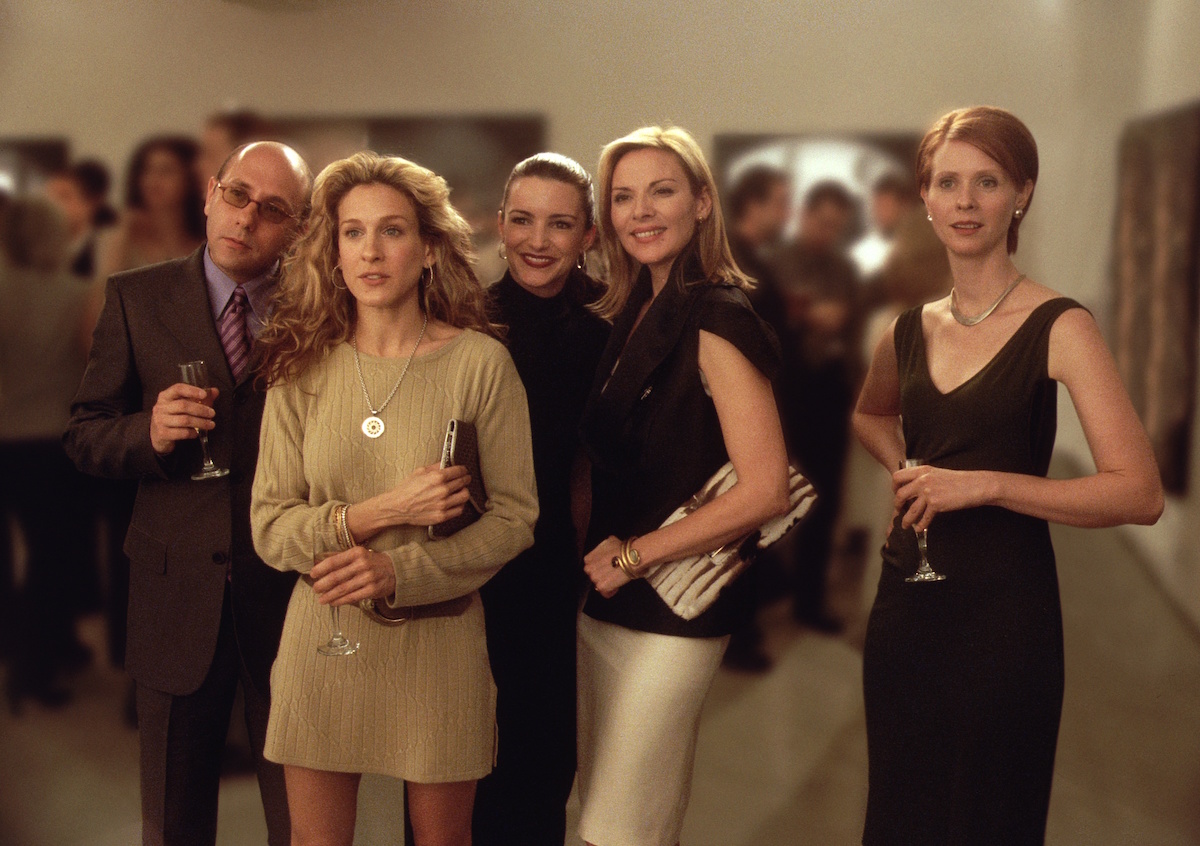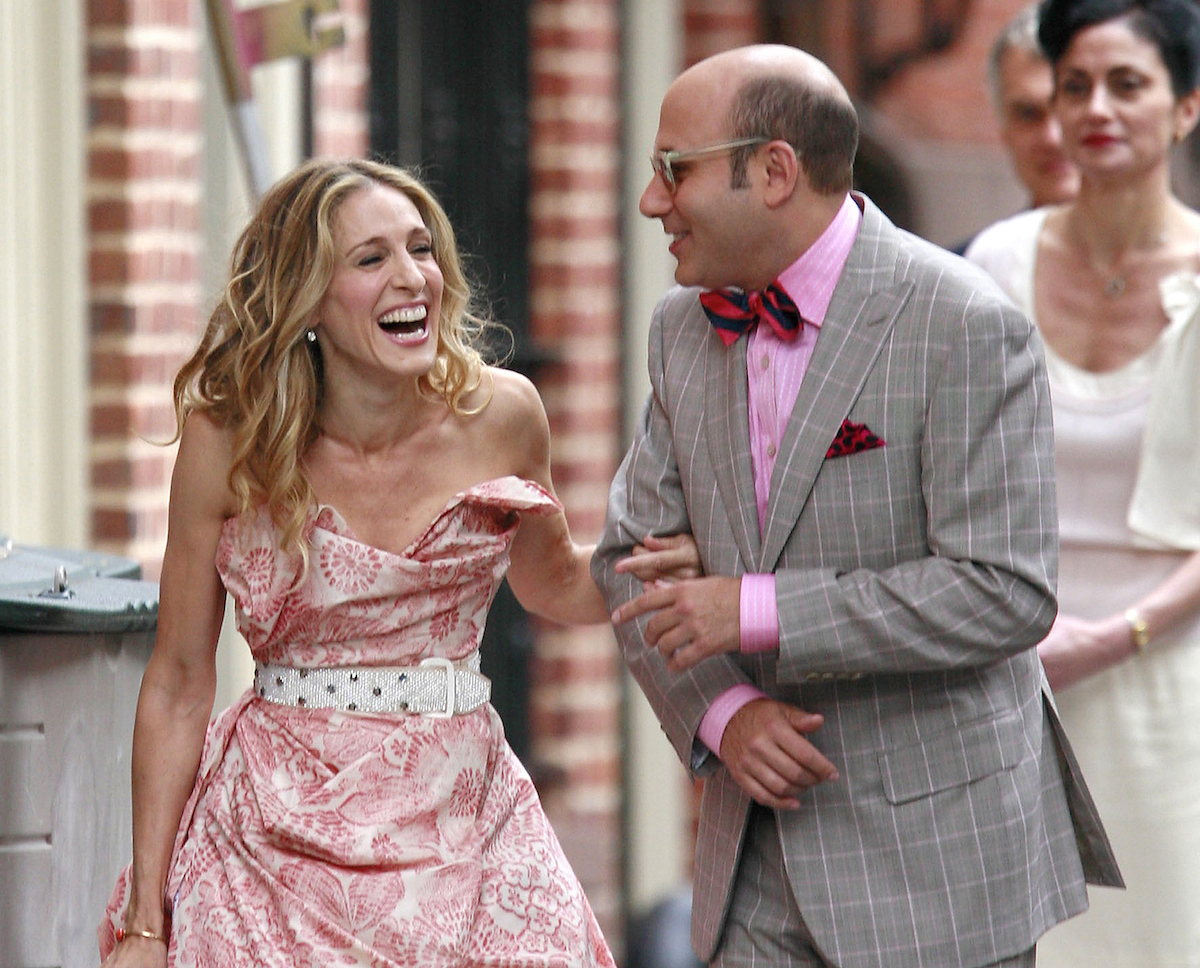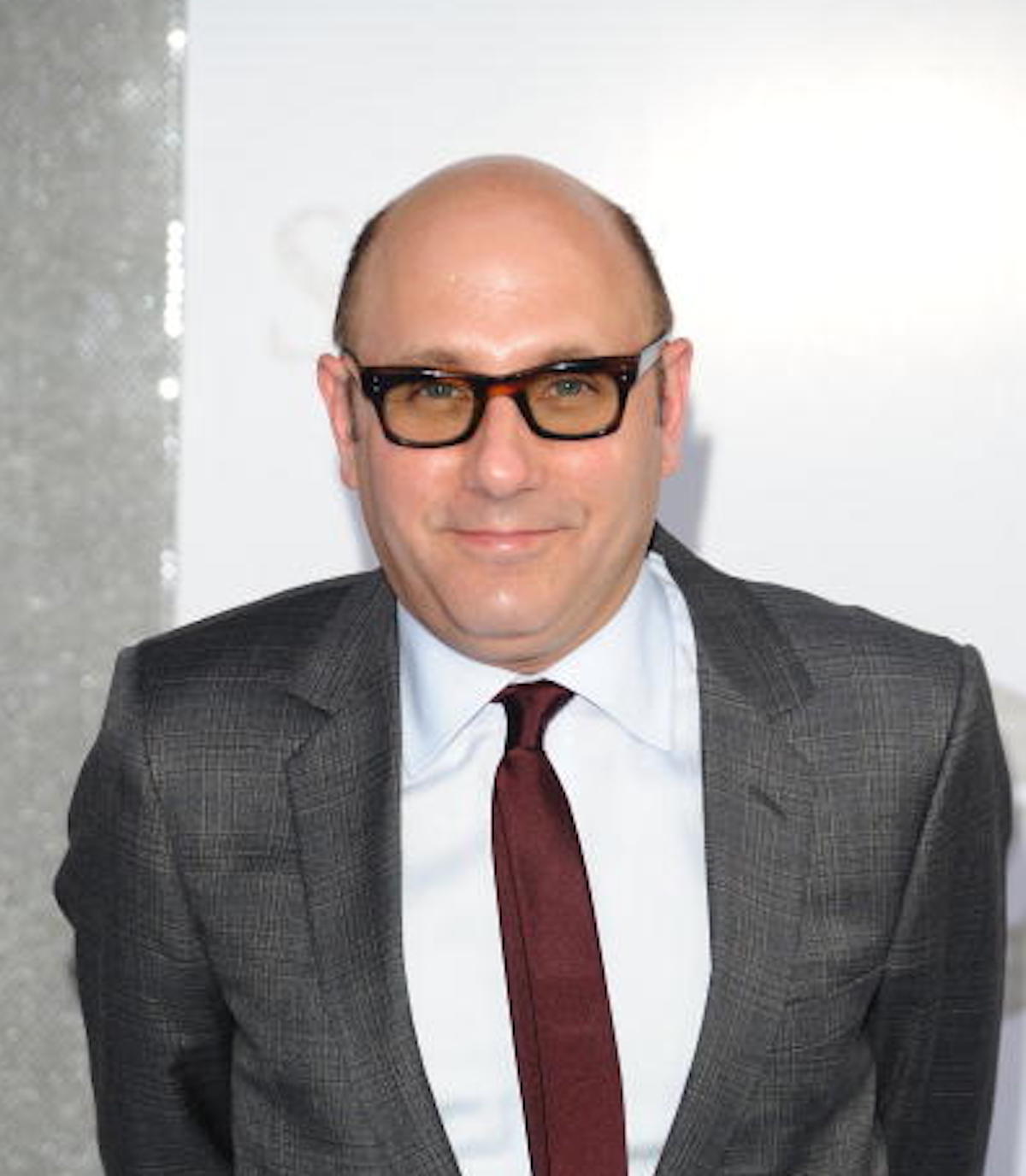Remembering Willie Garson
- Before the passing of Willie Garson, the beloved “Sex and the City” star appeared on the first few episodes of “And Just Like That,” a comedy-drama TV series created by Michael Patrick King for HBO Max.
- King, “AJLT”s executive producer, recently spoke on Season 2 Episode 10 of “And Just Like That… The Writers Room” podcast to offer some insight on how he kept Garson’s character Stanford Blatch alive.
- Garson passed away on September 21, 2021, at the age of 57, after a hard-fought battle with pancreatic cancer.
- Grief is known to “come in waves” and never fully leave you after a loved one has died. To grieve is to have fully loved someone, and that’s a beautiful thing, but the process of grief, can be fulling of missing, longing, and sadness.
- Pancreatic cancer is known as one of the most difficult types of cancers to treat, and a lot of it has to do with the fact that early-stage diagnoses are extremely rare. Symptoms often don’t present themselves until the disease has spread. Some of the main symptoms associated with pancreatic cancer may include jaundice, weight gain, back pain or diabetes.
King, “AJLT”s executive producer, opened up on Season 2 Episode 10 of “And Just Like That… The Writers Room” podcast about how himself and the writers of the movie coped with the loss of Garson, who passed away on September 21, 2021, at the age of 57 after a barbarous battle with pancreatic cancer.

He continued, “We wanted Willie to be alive as Stanford somewhere in the world. So we put him in Japan and then we didn’t mention him. Talk about extravagance.”
King said Stanford’s departure wasn’t really touched on, except when Carrie received a Kimono from Japan – and a letter informing her he’s staying in the Land of the Rising Sun as a Shinto Monk.
“People ask me, ‘Why a Shinto Monk?’ And I will tell you. Personally, I went to Kyoto with Sarah Jessica after the second movie, which I dont know, spoiler alert, was not received well … the critics were not nice to that movie, and we were in Japan and we opened it and then we went Kyoto. And I was in some sort of emotional shockwave.
In regard to why he was overcome by his feelings, King added, “I was going from temple to temple with Sarah Jessica. I was sitting there, trying to release these complicated feelings and I felt kind of peace.
“It was so beautiful. There wasn’t tears but wasn’t laughs. It was just kind of feeling this space in these beautiful temples that people would come in to light a candle …look at the flowers.”
King admitted that although it “always felt more than just me” quiet temples, further explaining when he started thinking about what to do with Garson’s character, “I somehow tapped into that feeling that Sarah Jessica and I had because I knew Carrie and Stanford had a very deep bond…So I thought what if he just stayed there in that beautiful, blissful temple and became a Shinto Monk?
After following through with some research, King learned Shinto Monk’s don’t have to be Japanese, they just have to dedicate some time. King likened the role of a Shinto Monk to a “concierge.”
“I wanted to somehow tribute Willie and put Stanford some place where it was golden and filled with light because I hope Willie’s someplace that’s golden and filled with light,” King said.
“It was poetic and it’s just very emotional.

In the aftermath of Garson’s death, actress Sarah Jessica Parker opened up about her late co-star’s private battle with pancreatic cancer, and how she looked after him while filming the iconic series’ sequel “And Just Like That.”
Parker and Garson’s friendship began on the set of “Sex and the City,” where she portrayed the legendary Carrie Bradshaw. The two co-stars became extremely close off-screen as well, and Parker revealed that Garson had disclosed his pancreatic cancer diagnosis to her despite keeping it private from the public.
“I knew before we started shooting [the sequel] that Willie was sick,” Parker previously told Vulture. “He asked me to keep that confidential, and I honored that.”
Because she knew about Garson’s cancer battle, Parker took it upon herself to keep an eye on him and make sure he was taking care of himself.
“It was fraught for me to know that he was sick with that particular, terrifying diagnosis,” Parker said. “We were a vaccine-mandated show, but nonetheless, a lot of our scenes were with a lot of background players, and I had great concerns about Willie staying as healthy as he could while shooting. I couldn’t share that with anybody. I’d only keep track of him, and I felt responsible in some ways for his health, his well-being on the set.”
Parker says that even though Garson was faced with such a challenge, he remained optimistic and full of life through the whole experience.
“Anytime there was downtime, I sat with him and talked with him,” Parker said. “He really was a raconteur, a famously gifted storyteller. We could hear the same story over and over again as if it were the first time, and he was terrifically good at documenting his life and sharing it with us.”

Coping With Grief
Grief is known to “come in waves” and never fully leave you after a loved one has died. To grieve is to have fully loved someone, and that’s a beautiful thing, but the process of grief, can be fulling of missing, longing, and sadness.
We love how Garson’s character is kept alive for “Sex and the City” fans as a tribute to the late actor.
Coping with grief after the loss of a loved one, or after a diagnosis of a disease like cancer, can be helped by seeing a psychiatrist, counselor, or oncological social worker.
You don’t have to suffer through your grief alone. Seek outside support when you’ve lost someone close to you.
Dealing With Grief After a Cancer Diagnosis
Pancreatic Cancer: A Breakdown
Pancreatic cancer is known as one of the most difficult types of cancers to treat, and a lot of it has to do with the fact that early-stage diagnoses are extremely rare.
Symptoms often don’t present themselves until the disease has spread. Some of the main symptoms associated with pancreatic cancer may include jaundice, weight gain, back pain or diabetes.
Expert Resources On Pancreatic Cancer
This leads to more late-stage diagnoses, and therefore treatment options can be more limited.
According to Dr. Anirban Maitra, 80% of diagnoses are caught in later stages since symptoms don’t present themselves until the disease has already spread.
One of the main reasons pancreatic cancer is one of the most difficult cancers to treat is because of the stroma, a barrier around cancer cells which prevents medications, such as chemotherapy and radiation, from targeting and killing these cells. If these cells continue to grow, then the disease will continue to progress.
Related: Detecting Pancreatic Cancer Early Is Crucial
“Think of pancreatic cancer as an oatmeal raisin cookie and the raisins are actually the cancer cells, and the cookie part is actually all the stroma around it,” Dr. Allyson Ocean, a medical oncologist at Weill Cornell Medical Center, previously told SurvivorNet.
“And imagine having to navigate through all that stroma for a treatment to be able to get into a cell to kill it. So that’s why the treatments just really aren’t good enough to penetrate the cancer. But we’re improving, we’re getting better treatments.”
Dr. Allyson Ocean explains why pancreatic cancer is so hard to treat
Treatment for pancreatic cancer, according to Johns Hopkins Medicine, may include surgery, chemotherapy, radiation therapy, vaccination, pain management, immunotherapy and dietary changes.
Immunotherapy, in particular, has been making waves in pancreatic cancer treatment, but other types of treatments are being studied all the time via clinical trials, research studies that compare the most effective known treatment for a specific type or stage of a disease with a new approach.
Detecting Pancreatic Cancer Early Is Crucial
Clinical trials do not guarantee you will be given the most effective treatment, so it’s important to know they are not right for everyone. Before getting involved with one, talk with your doctor(s) and consider the following general risks of enrolling in a clinical trial:
- The risk of harm and/or side effects due to experimental treatments
- Researchers may be unaware of some potential side effects for experimental treatments
- The treatment may not work for you, even if it has worked for others
If you or a loved one has pancreatic cancer and you’re curious about clinical trial options, consider using the SurvivorNet Clinical Trial Finder: an A.I. driven tool for patients to find clinical trial options for treatment.
The tool is updated daily and built on top of clinicaltrials.gov, a database maintained by the U.S. government that compiles privately and publicly funded clinical trials conducted around the world, and gives users access to more than 100,000+ individual clinical trials.
“Clinical trials are critical to the development of new therapies, and as we live through this extraordinary revolution in genomics, immunotherapy and targeted therapy, it’s clear that one of the most pressing needs for patients, clinical trials sponsors, and researchers is simply a better way to find patients, “SurvivorNet CEO Steve Alperin said. “Even one percent more people successfully enrolled in clinical trials can change the world.”
Contributing: SurvivorNet Staff
Learn more about SurvivorNet's rigorous medical review process.
